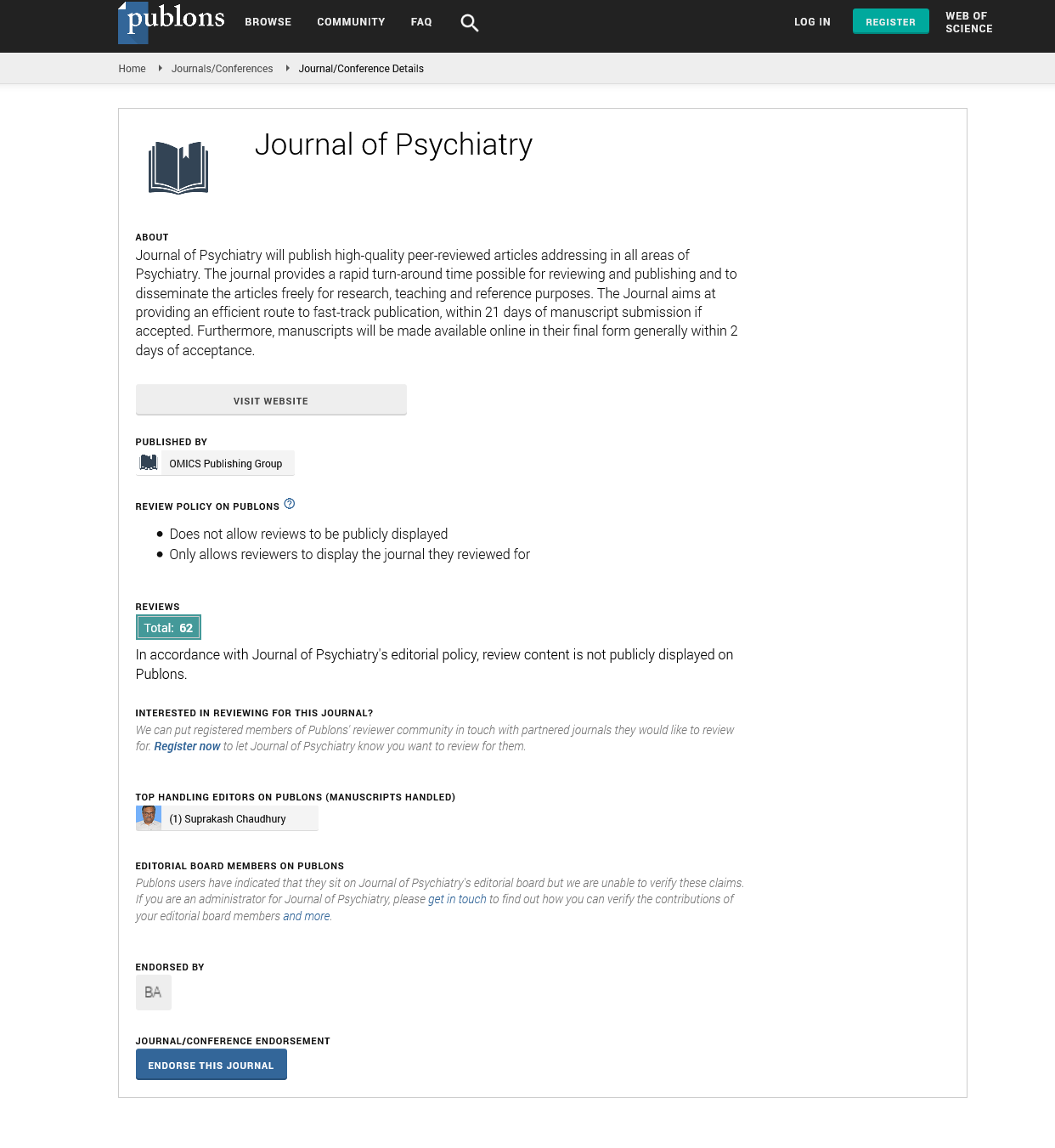Indexed In
- RefSeek
- Hamdard University
- EBSCO A-Z
- OCLC- WorldCat
- SWB online catalog
- Publons
- International committee of medical journals editors (ICMJE)
- Geneva Foundation for Medical Education and Research
Useful Links
Share This Page
Open Access Journals
- Agri and Aquaculture
- Biochemistry
- Bioinformatics & Systems Biology
- Business & Management
- Chemistry
- Clinical Sciences
- Engineering
- Food & Nutrition
- General Science
- Genetics & Molecular Biology
- Immunology & Microbiology
- Medical Sciences
- Neuroscience & Psychology
- Nursing & Health Care
- Pharmaceutical Sciences
Perspective - (2025) Volume 28, Issue 3
Workplace Stress and Its Effects on Adult Mental Health
Daniel Herrera*Received: 01-May-2025, Manuscript No. JOP-25-29996; Editor assigned: 03-May-2025, Pre QC No. JOP-25-29996; Reviewed: 17-May-2025, QC No. JOP-25-29996; Revised: 23-May-2025, Manuscript No. JOP-25-29996; Published: 31-May-2025, DOI: 10.35248/2378-5756.25.28.752
Description
Modern work environments have transformed significantly over recent decades. The constant push for efficiency, performance tracking and digital communication has created new demands that many employees find difficult to manage. Across various industries, adult workers are reporting increased stress levels, which are linked to a rise in emotional disturbances. This pattern affects individuals differently depending on their personality, work setting and access to support, but it has become clear that occupational stress is now one of the more common contributors to poor mental health in adulthood. One of the major sources of stress in the workplace comes from workload imbalance. Employees who are expected to manage an excessive number of tasks, often with limited resources or unrealistic deadlines, may experience feelings of being overwhelmed. This ongoing demand can lead to anxiety, difficulty concentrating and a loss of motivation. When expectations are unclear or constantly shifting, workers may feel disoriented or unappreciated, which adds to emotional tension and undermines their confidence.
Another factor is job insecurity. Changes in organizational structures, economic uncertainty and the increased use of temporary contracts or freelance work contribute to a feeling of instability. Adults who are unsure about their future employment may experience chronic worry, interrupted sleep and preoccupation with performance. This type of stress may not only influence mental well-being but also affect physical health over time. Elevated stress hormones have been linked to high blood pressure, digestive problems and weakened immune function, suggesting that psychological discomfort is deeply connected to overall health. Interpersonal dynamics at work also have a significant role. Conflict with supervisors, lack of collaboration among colleagues, or feelings of exclusion from team discussions can create a hostile or cold environment. These situations may trigger emotional withdrawal, irritability, or even depressive thoughts, particularly if the individual feels powerless to address the issue. In cases where bullying or persistent criticism occurs, more severe psychiatric symptoms may develop, including long-lasting damage to self-worth and difficulty trusting others in future work settings.
Workplace stress is further amplified by digital communication that extends beyond traditional office hours. The expectation to remain available by phone or email in the evenings or on weekends disrupts personal time and prevents full mental rest. Employees who feel they cannot disconnect often show signs of fatigue and emotional exhaustion. Over time, this lack of recovery reduces the ability to manage daily pressures and makes minor frustrations feel more intense than they otherwise would. In addition to the external demands of the job, internal pressure plays a major role. Perfectionism, fear of disappointing others, or concerns about status may drive individuals to push themselves harder than necessary. This self-imposed stress can be just as powerful as external expectations and often leads to difficulty asking for help or recognizing when rest is needed. Some individuals may begin to ignore signs of mental strain, focusing only on their responsibilities until their symptoms interfere with work performance or personal relationships.
Support systems within the workplace can either reduce or increase emotional strain. Work environments that encourage open communication, provide feedback in a constructive way and allow employees to voice concerns are more likely to support psychological health. In contrast, organizations that discourage dialogue or fail to recognize the human side of work may contribute to burnout and disengagement. Managers play an essential role in this context, as their behavior often sets the tone for how mental health is regarded within a team. Organizations that actively promote mental health awareness through training, flexible scheduling and access to counselling can help reduce long-term emotional risks for their workforce. Creating space for recovery, encouraging realistic goals and supporting team cohesion are crucial steps toward a more mentally resilient workplace. Leadership must model healthy behavior and prioritize balance to reduce the normalization of overwork and emotional suppression. A proactive approach benefits not just the individual but the entire organization by fostering higher morale, improved retention and greater productivity.
Mental health symptoms related to workplace stress can range from mild tension and sleep difficulty to more severe outcomes such as panic attacks, depressive episodes, or loss of interest in all areas of life. These symptoms often develop gradually and may go unnoticed until they affect performance. It is also common for individuals to mask their discomfort, fearing stigma or negative judgment from co-workers or superiors. Overall, understanding how stress in professional settings impacts emotional and mental well-being is essential for creating environments where individuals can thrive. By identifying common sources of pressure and taking action to minimize their impact, employers and employees alike can contribute to a healthier and more sustainable experience at work.
Citation: Herrera D (2025). Workplace Stress and Its Effects on Adult Mental Health. 28:752.
Copyright: © 2025 Herrera D. This is an open-access article distributed under the terms of the Creative Commons Attribution License, which permits unrestricted use, distribution and reproduction in any medium, provided the original author and source are credited

